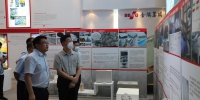[预告]05.18物理学系学术大师讲座《Nanogenerators as New Energy Technology and Piezotronics for Smart Systems》
讲座时间: 2015年5月18日下午 15:00-17:00
讲座地点: 北京师范大学后主楼1318会议室
主办单位: 北京师范大学物理学系
主讲人: 王中林院士
主讲人简介:
王中林,位居当今世界最杰出的科学家排名榜第25名,是佐治亚理工学院终身校董事讲席教授,Hightower终身讲席教授,首批中组部“千人计划”顶尖人才与团队入选者(共4名),欧洲科学院院士。王中林院士在国际一流刊物上发表期刊论文达900多篇(其中16篇Science或Nature期刊,9篇Nature子刊)。其学术论文被引用次数达80,000次以上,H因子(h-index)136,是在材料和纳米技术相关论文中被引用次数世界排名前五的作者之一。
王教授的工作具有开创性和前瞻性。他发明了纳米发电机,并提出了自充电纳米结构系统,为微纳电子系统的发展开辟了新途径。他开创了纳米结构压电电子学和压电光电子学研究的先河,对纳米机器人、人-电界面纳米传感器、医学诊断及光伏技术的发展具有里程碑意义。
Abstract:
Developing wireless nanodevices and nanosystems is of critical importance for sensing, medical science, environmental/infrastructure monitoring, defense technology and even personal electronics. It is highly desirable for wireless devices to be self-powered without using battery. Nanogenerators (NGs) have been developed based on piezoelectric, trioboelectric and pyroelectric effects, aiming at building self-sufficient power sources for mico/nano-systems. The output of the nanogenerators now is high enough to drive a wireless sensor system and charge a battery for a cell phone, and they are becoming a vital technology for sustainable, independent and maintenance free operation of micro/nano-systems and mobile/portable electronics. This technology is now not only capable of driving portable electronics, but also has the potential for harvesting wind and ocean wave energy for large-scale power application. This talk will focus on the updated progress in NGs.
For Wurtzite and zinc blend structures that have non-central symmetry, such as ZnO, GaN and InN, a piezoelectric potential (piezopotential) is created in the crystal by applying a strain. Such piezopotential can serve as a “gate” voltage that can effectively tune/control the charge transport across an interface/junction; electronics fabricated based on such a mechanism is coined as piezotronics, with applications in force/pressure triggered/controlled electronic devices, sensors, logic units and memory. By using the piezotronic effect, we show that the optoelectronc devices fabricated using wurtzite materials can have superior performance as solar cell, photon detector and light emitting diode. Piezotronics is likely to serve as a “mechanosensation” for directly interfacing biomechanical action with silicon based technology and active flexible electronics. This lecture will focus on the updated progress in the field and its expansion to 2D materials.
References:
1. Nature Communication, 5 (2014) 3456.
2. Science, 340 (2013) 952-957.
3. Nature Photonics, 7 (2013) 752-758.
4. Nature, 2014, DOI: 10.1038/nature13792.
(物理学系)
